A Day With Fossil Hunters
Science Friday treks with paleontologists on the fossil hunt in Utah’s dusty canyons.
No one knows how the dinosaurs rose to dominate the planet, but the answers may lie within the mysterious End Triassic mass extinction that wiped out their competition. Experience what it’s like in the field with the mass extinction detectives at Methods, From Science Friday.
Out in the canyons of southeastern Utah, the arid August heat pricks at your skin. It’s a toasty 90 degrees Fahrenheit. When the wind picks up it only leaves you covered in a thin layer of fine dust. The loose rubble, fallen from the 200-million-year-old sandstone cliffs above crunch beneath your boots. And if you’re not careful with your steps, your walk can turn into a slide down the steep slopes.
But for fossil hunters, it’s worth it to unearth prehistoric gold.
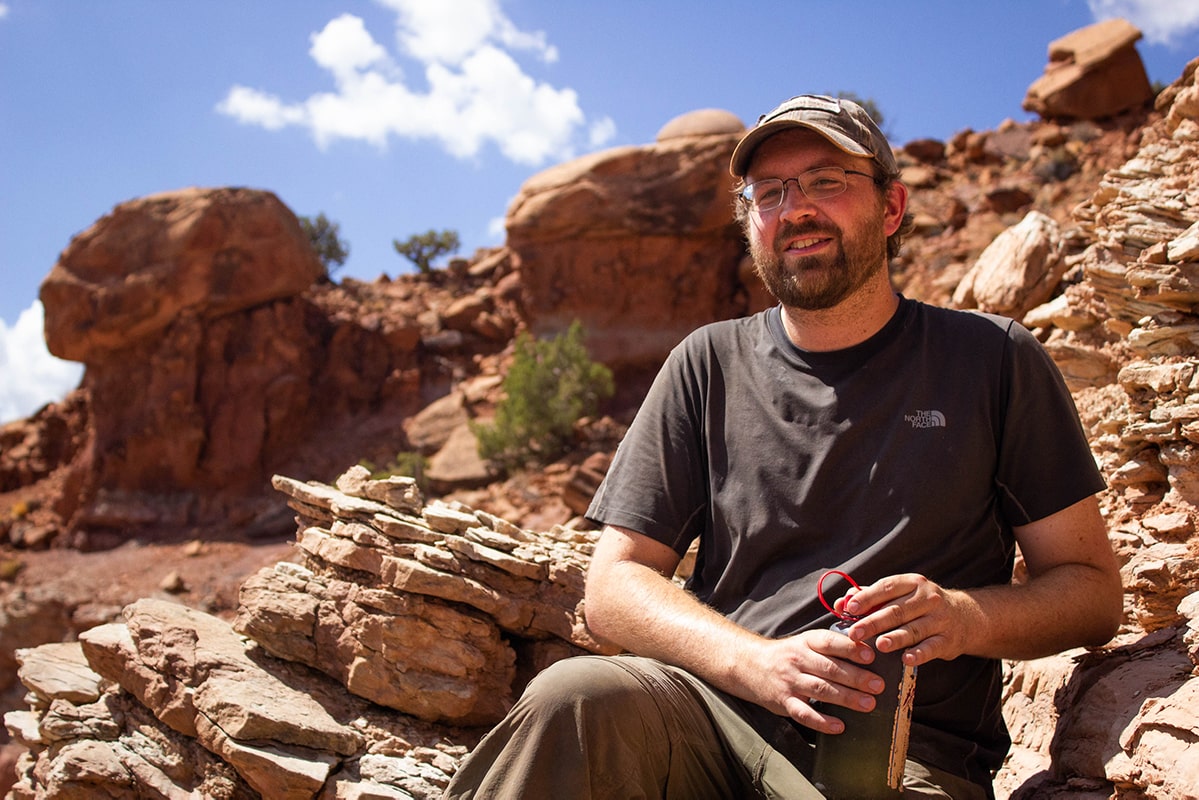
“We have to constantly remind ourselves to be extra cautious when we’re working here,” says Randall Irmis, curator of paleontology at the Natural History Museum of Utah and associate professor at the University of Utah. “But for me, it’s not so much mental preparation about the physical exercise as much as it is that you get excited about hiking around in these landscapes and finding cool fossils.”
As you venture deeper into the Indian Creek corridor in Bears Ears National Monument, you travel further back in geologic time—eventually, to the era of the earliest dinosaurs. It’s a paleontological playground for Irmis and his team of researchers and volunteers. They’re piecing together clues about the late Triassic period around 210 million years ago, when protodinosaurs, or “dinosaur aunts and uncles” as Irmis calls them, dominated this area of Utah. Science Friday investigated what it was like to step into a fossil hunter’s boots, and followed Irmis into the desert.
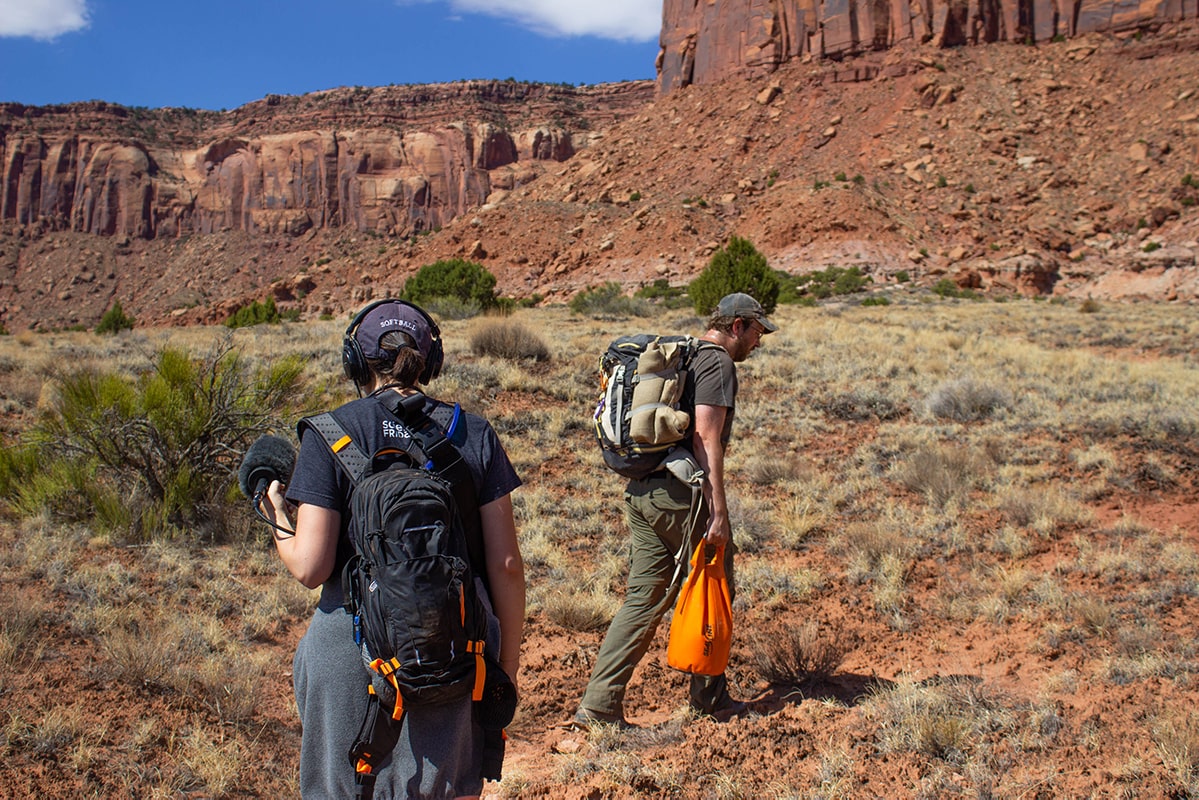
Just a couple days before this expedition, volunteer Cody Rock spotted a small bit of a skull poking out from the rocky ledge that belonged to one of the top predators of the Triassic: The phytosaur. These large reptiles look a lot like crocodiles—long snouts armed with many sharp teeth—earning them the nickname “swamp monster.”
“You wouldn’t have wanted to go swimming in a Triassic river,” Irmis says, noting not only phytosaurs, but amphibian metoposaurs and other aquatic creatures. “Too many things to take off a leg or arm.”
To take the prized phytosaur skull back to the lab, Irmis, Rock, and fellow paleontologist Andrew Milner, from the the Dinosaur Track Museum St. George in Southwestern Utah, began the intricate process of removing the fossil from the rock. But a dig is far less glamorous than that depicted by Hollywood. A full skeleton laid out and easily accessible from the surface, like what you might see in Jurassic Park, is a find paleontologists dream of, Irmis says. Instead, collecting one fossil, like the phytosaur skull, can take multiple days. It requires careful brushing, chiseling, plastering, and even sawing with a powerful motor rocksaw.
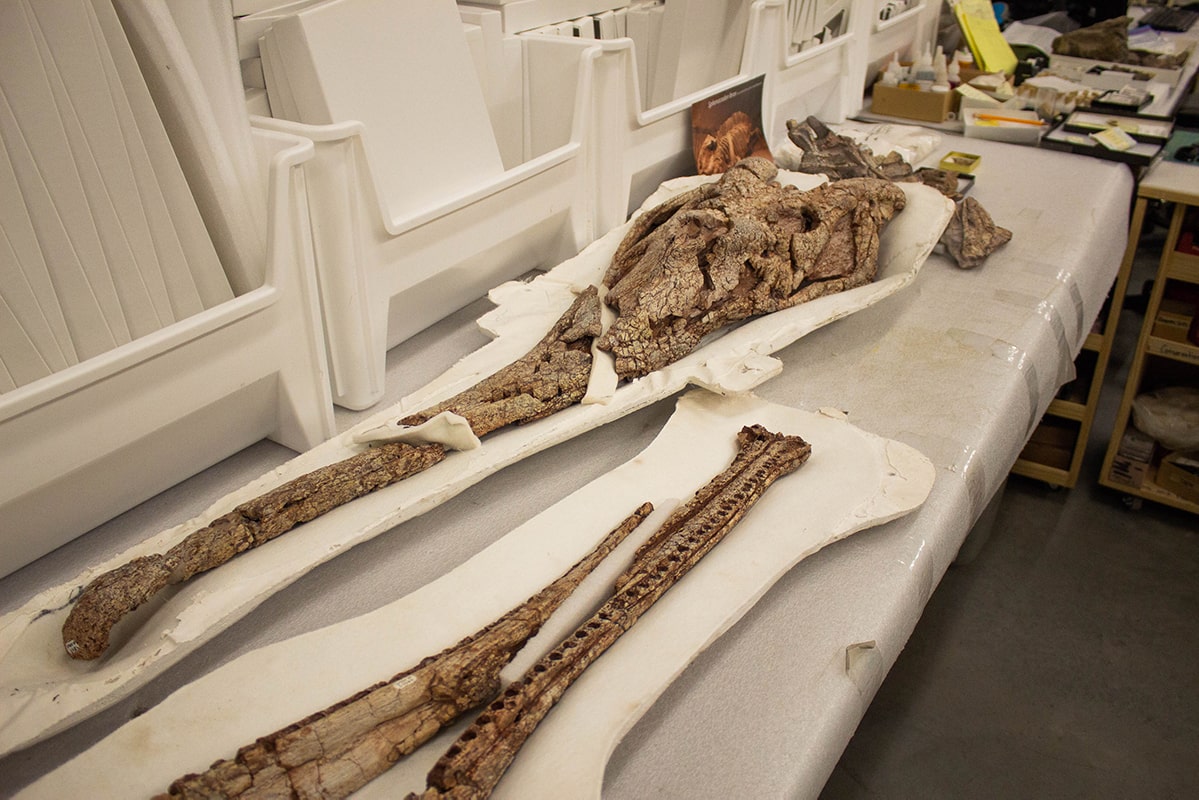
Despite the hard work, a fossil find is important paleontological evidence for better understanding Earth’s history.
“Ultimately, this is nothing different from someone gathering data in a lab, we’re just doing it out in the wilderness,” Irmis says. “But this is how we get our data, to test our hypotheses just like any other scientist.”
Trek out into the canyon with Irmis, his team, and Science Friday by listening to the audio diary and checking out the photos from the field below.
Audio postcard by Katie Hiler. Text, photos, and videos by Lauren J. Young.
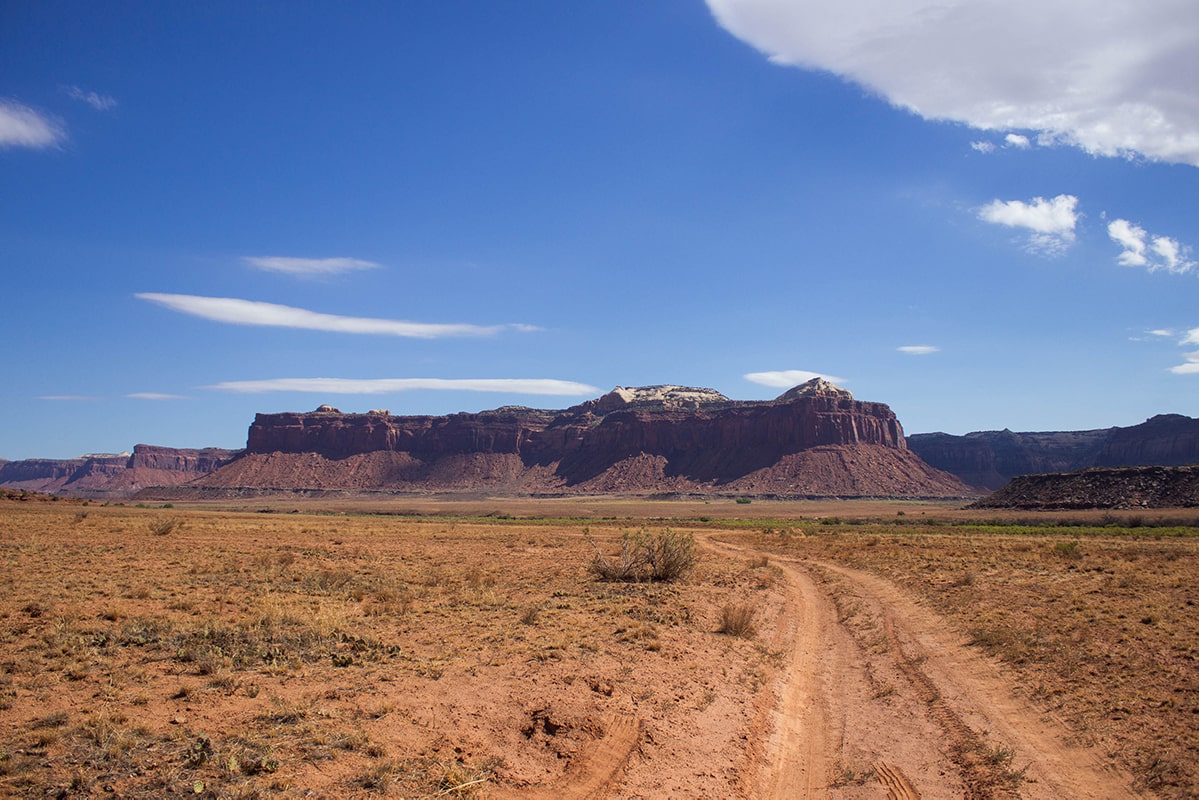
Indian Creek's canyons. Credit: Lauren J. Young
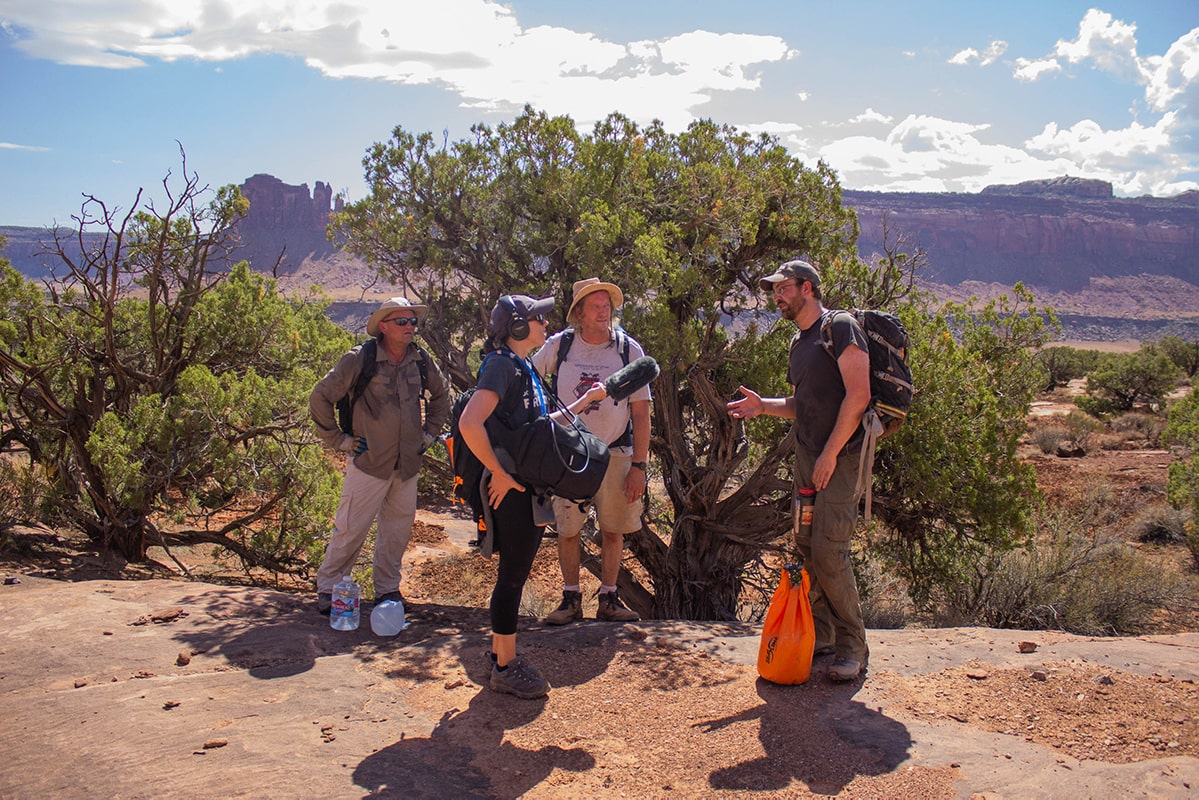
Radio producer Katie Hiler interviews Randall Irmis (right), paleontologist Andrew Milner (center), and volunteer Cody Rock (left). Credit: Lauren J. Young
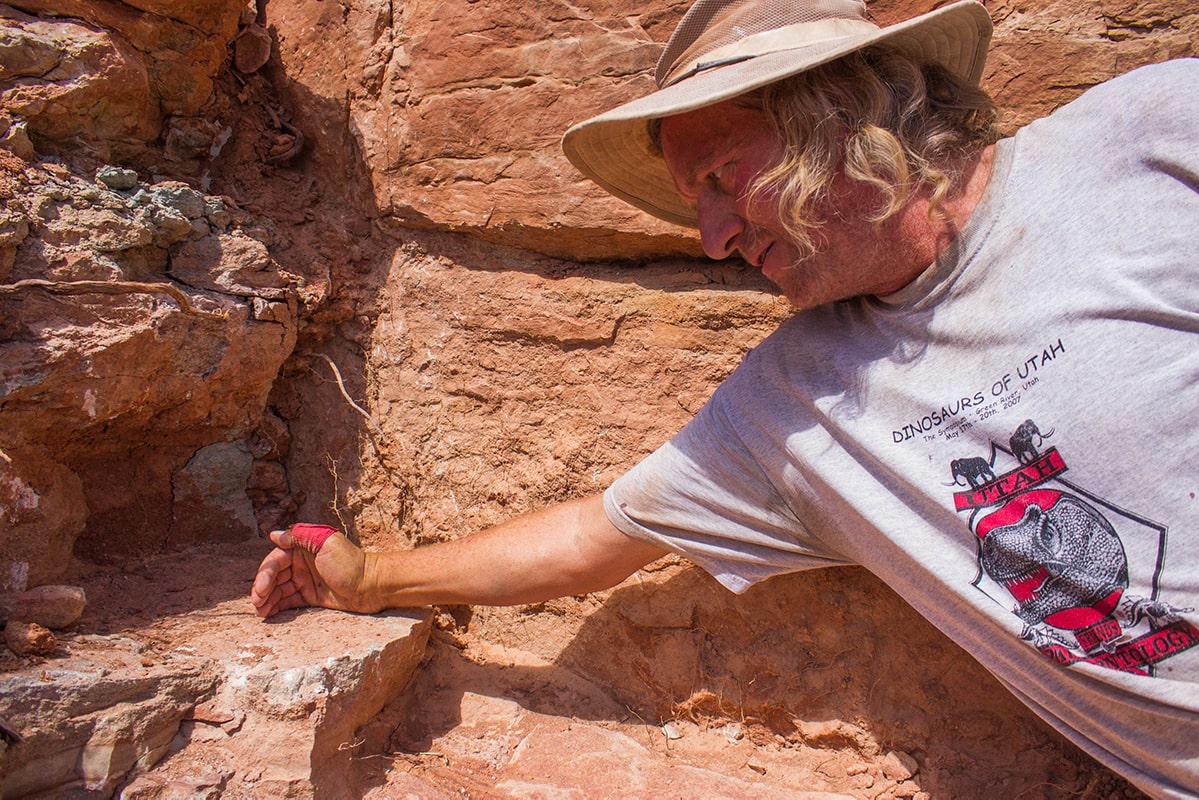
Andrew Milner, site paleontologist and curator at the Dinosaur Track Museum St. George in Utah. Credit: Lauren J. Young
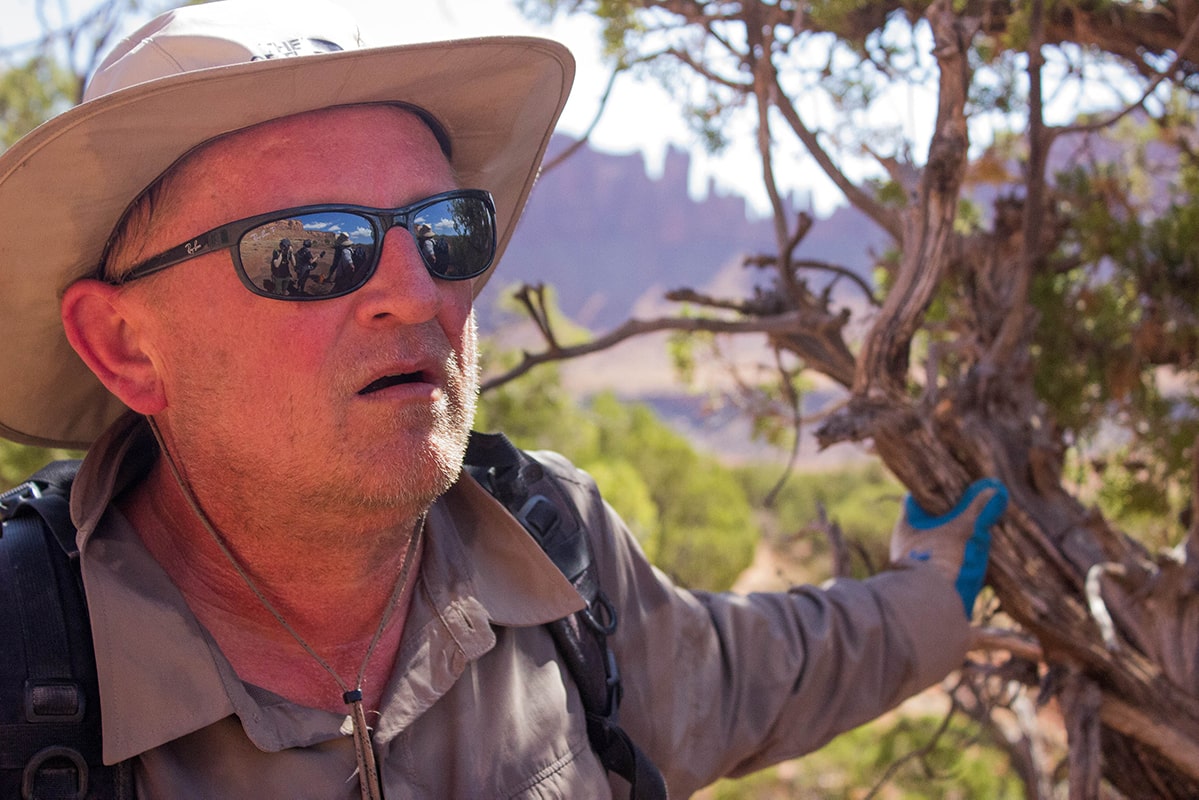
Cody Rock, the pizza delivery man based in Salt Lake City who first spotted the phytosaur skull while prospecting the canyon. He is one of the many volunteers at the Natural History Museum of Utah and regularly goes out on digs with the paleontologists. Credit: Lauren J. Young
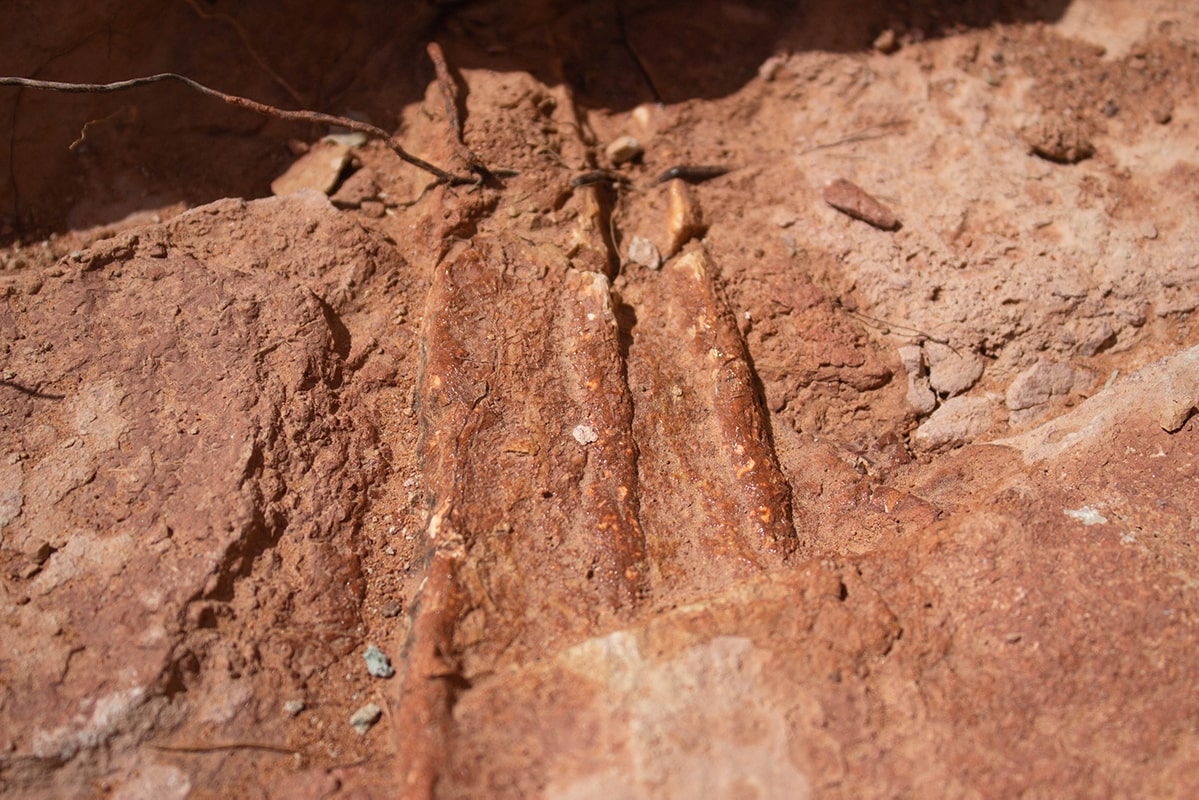
The fossilized snout of a phytosaur. Credit: Lauren J. Young

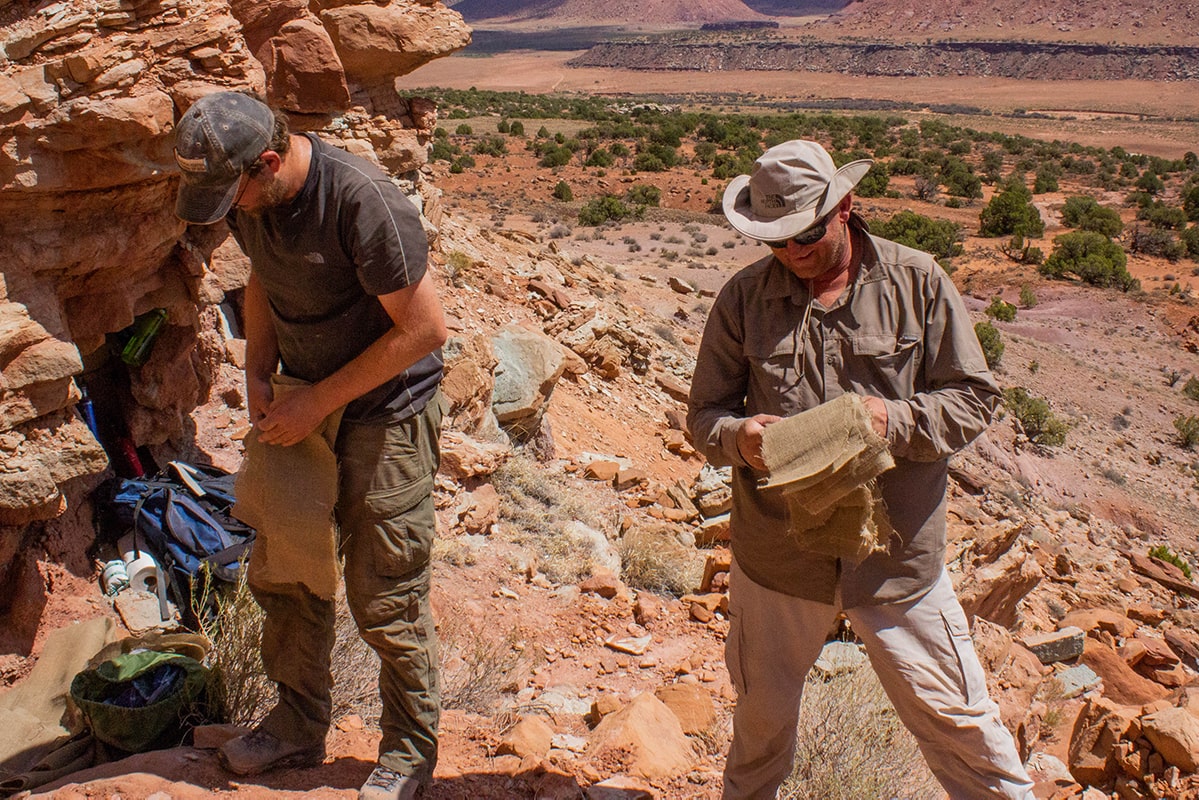
Irmis and Rock cut burlap into strips to create a plaster “jacket” that is wrapped around the rock holding the fossil in order to protect it as they bring it from the field to the lab. Credit: Lauren J. Young
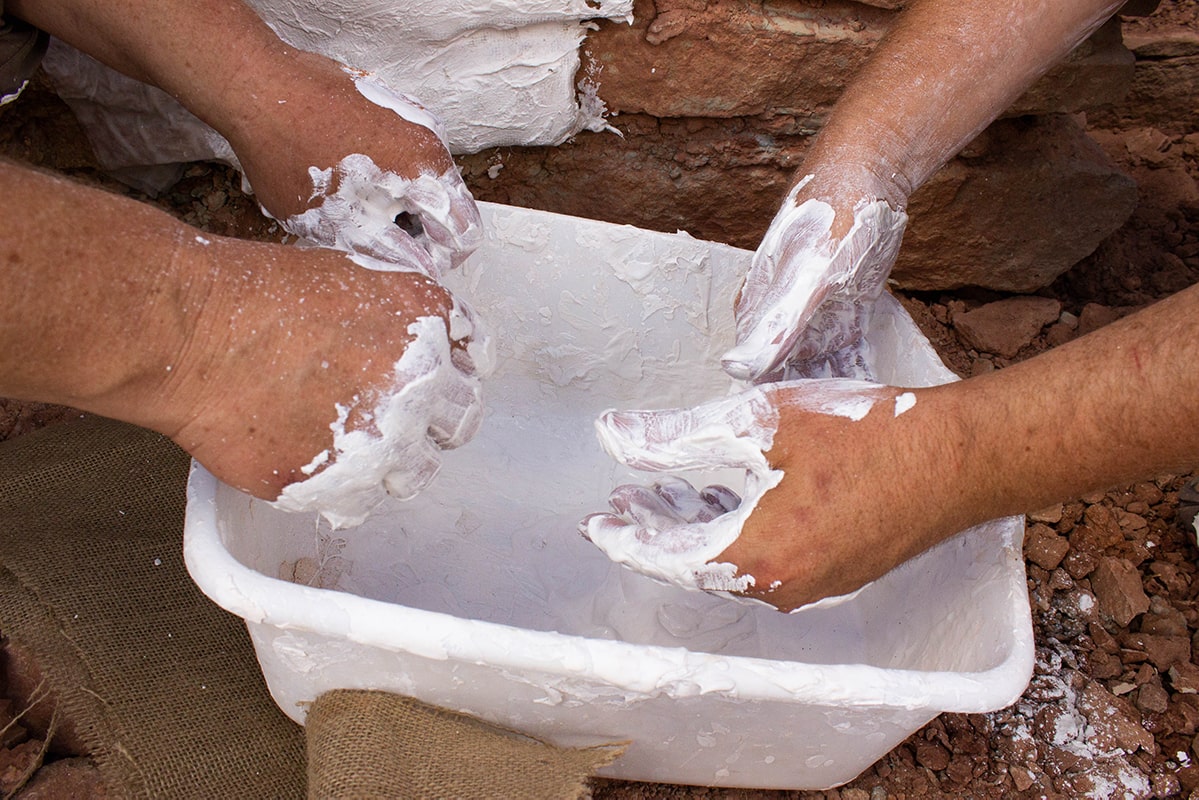
After strips of paper towel are laid over the rock, the burlap dipped in plaster creates a nice protective coat. Occasionally, someone might leave the site with a nice white handprint on their back when a “plaster fight” breaks out. Credit: Lauren J. Young.
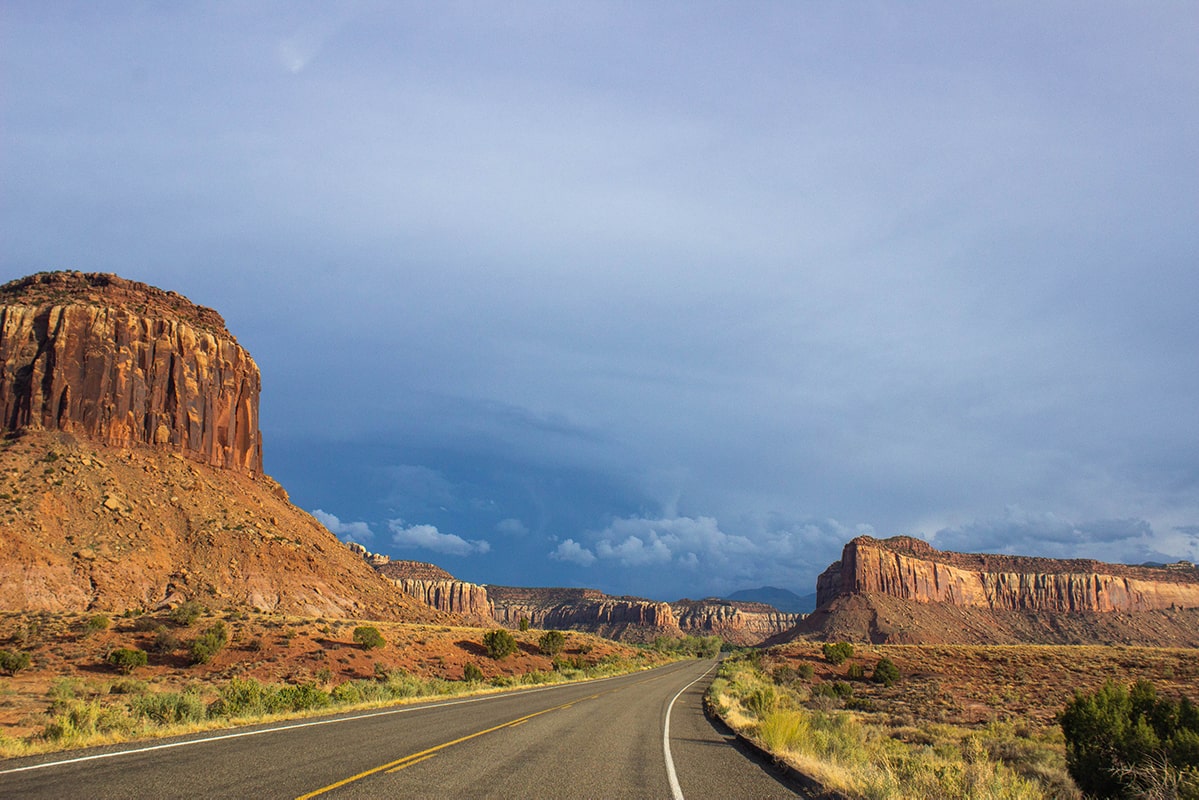
The rocks in Indian Creek's canyons date back to over 200 million years ago. Credit: Lauren J. Young.

Lauren J. Young was Science Friday’s digital producer. When she’s not shelving books as a library assistant, she’s adding to her impressive Pez dispenser collection.
Katie Feather is a former SciFri producer and the proud mother of two cats, Charleigh and Sadie.